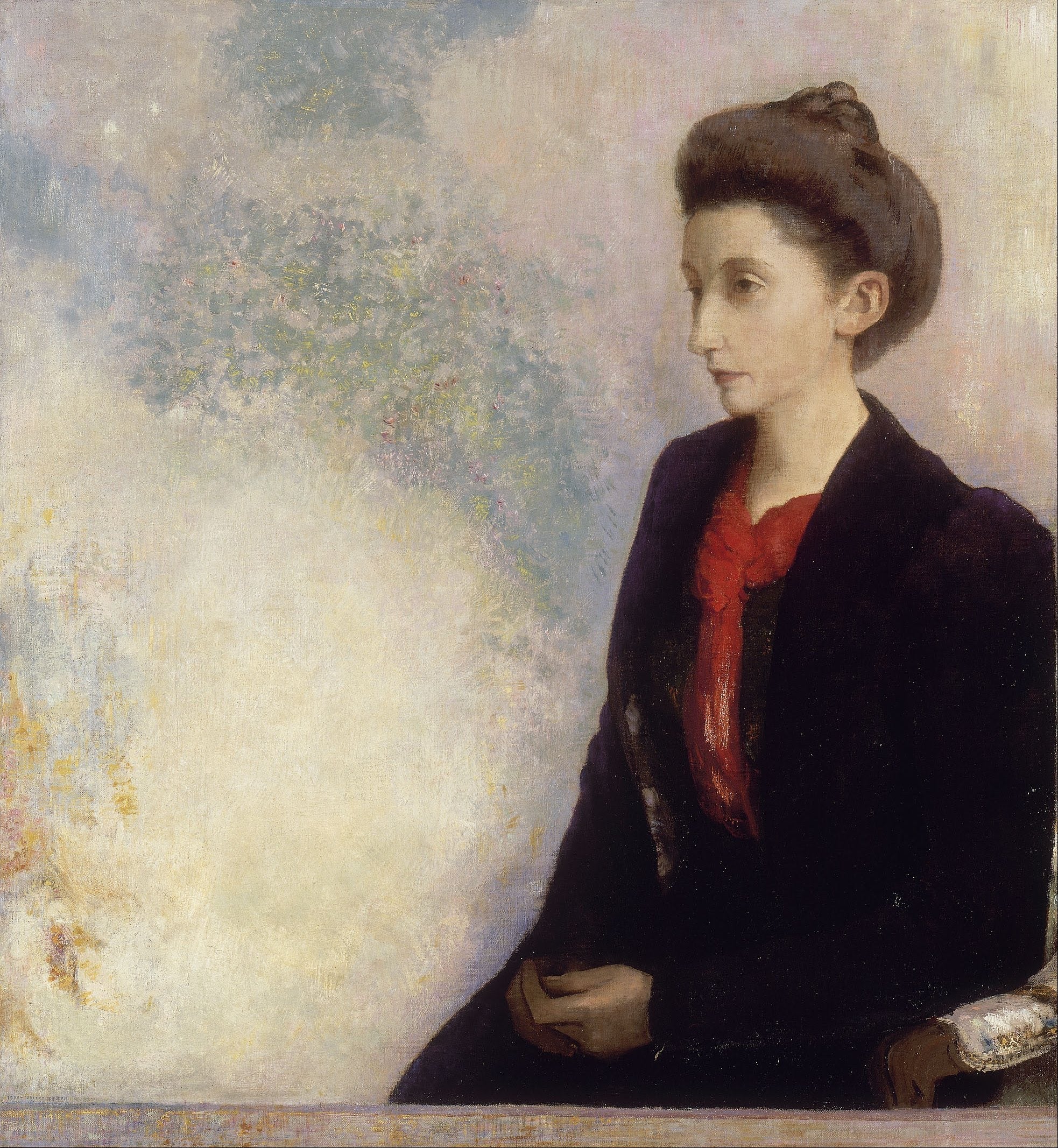Odilon Redon (French, 1840-1916)
•Posted on March 21 2020

French painter and graphic artist, Odilon Redon was born into prosperity in 1840 in Bordeaux, Aquitaine, France. He is known best for his prints, drawings, and paintings. Bertrand-Jean Redon, affectionately called Odilon by his mother and virtually everyone else, showed an early zeal and talent for drawing as a child. In fact, at the tender age of ten, he was awarded a drawing prize at school and subsequently embarked upon the formal study of drawing at fifteen. However, his father insisted he study architecture instead, but he is that he was unable to pass his entrance exam to gain admission to École des Beaux-Arts in Paris, his father's dreams were never realized in Odilon. However, Odilon's little brother, Gaston Redon, did become a notable architect.

Redon briefly studied painting at École des Beaux-Arts under Jean-Léon Gérôme in 1864. In addition, the young artist studied sculpting under Rodolphe Bresdin and etching and lithography in Bordeau, but this pursuit was interrupted in 1870 when he was called to serve in the Franco-Prussian War. When the war ended, he relocated to Paris and was prompted to again embark on his career in art and commenced with his work almost exclusively in the mediums of charcoal and lithography, which he labeled his "noirs". His work went relatively unnoticed until he released his initial collection of lithographs, "Dans le Rêve", in 1879. Redon married in 1880 and sadly, his first son, Jean, died in infancy in 1886. Only later in life did his domestic life mirror the quality of his artistic prestige. His second son Arï was born in 1889, giving him great joy.
He still garnered little acclaim for his work until the appearance of an 1884 cult novel, "À Rebours (Against Nature)", written by Joris-Karl Huysmans, a story that featured a disillusioned, self-indulgent aristocrat living in an isolated world of his beloved perversions, who collected Redon's drawings. Redon's charcoal drawing and lithographs reflect an introspective exploration of his mind and heart, akin to a strange dream. His work includes curiosities depicting absurdly disjointed images and involved dark matter such as insects and other oddities very much influenced by the literary works of Edgar Allen Poe. He aptly illustrates his inspiration and the forces at work that caused him to produce such curious imagery in his journal, "A Soi-même (To Myself)".

In fact, Redon was well into his fifties before he began generating works in color. Beginning in the late 1890s, Redon displayed his never before seen abilities that involved mediums with high color content.
Until this point in his life, his situation was relatively bleak and his works were a reflection evidenced in his strangely beautiful noirs. His life was upset by seriously ill health complications during 1894-95 when he underwent a life-altering transformation through this illness that allowed him to emerge as a fulfilled, cheerful man.
He began to express bold, vivid colors in his art in fantastical mythological scenes and flower paintings. To the surprise of art enthusiasts, he displayed equal skill with oils and pastels that he had previously exhibited in dark charcoals and lithographs. In fact, Redon ushered in the style that became Surrealism. When pastel and oils became the new trend, he no longer produced noirs. Redon had an ardent fascination with Hindu and Buddhist culture as evidenced by his works, "The Death of the Buddha and "The Buddha".
In 1903, Redon received the Legion of Honor. His notoriety grew when a catalog of etchings and lithographs was published by André Mellerio in 1913. Later that year, he was given the most voluminous single representation at the New York Armory Show. Though he became quite a popular figure in the art circuit, he preferred to maintain his privacy. He died on dies on July 6, 1916, in Paris while still working on, "The Virgin", a canvas oil painting.